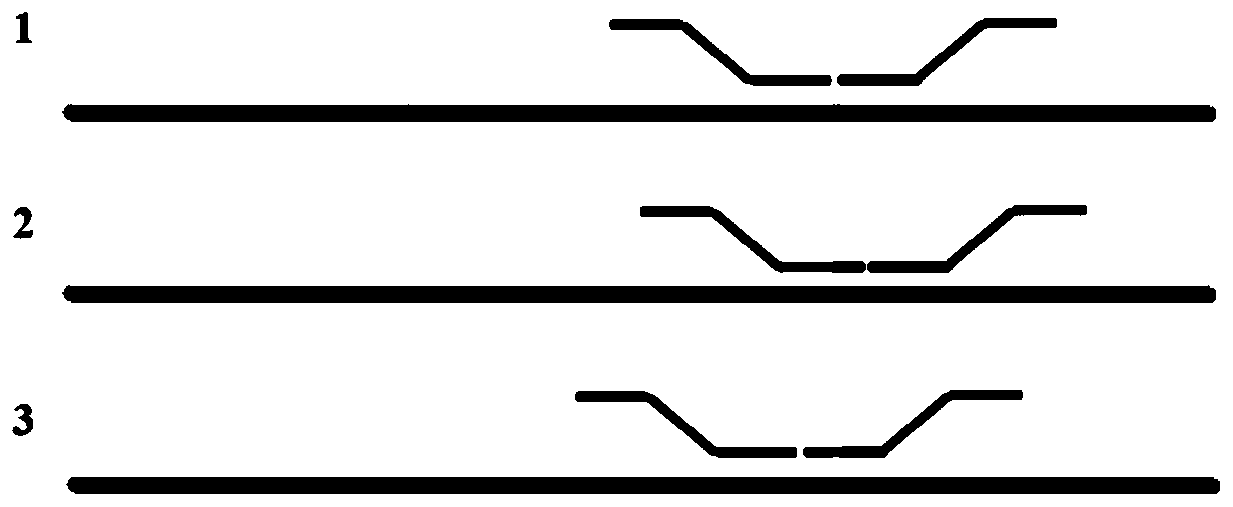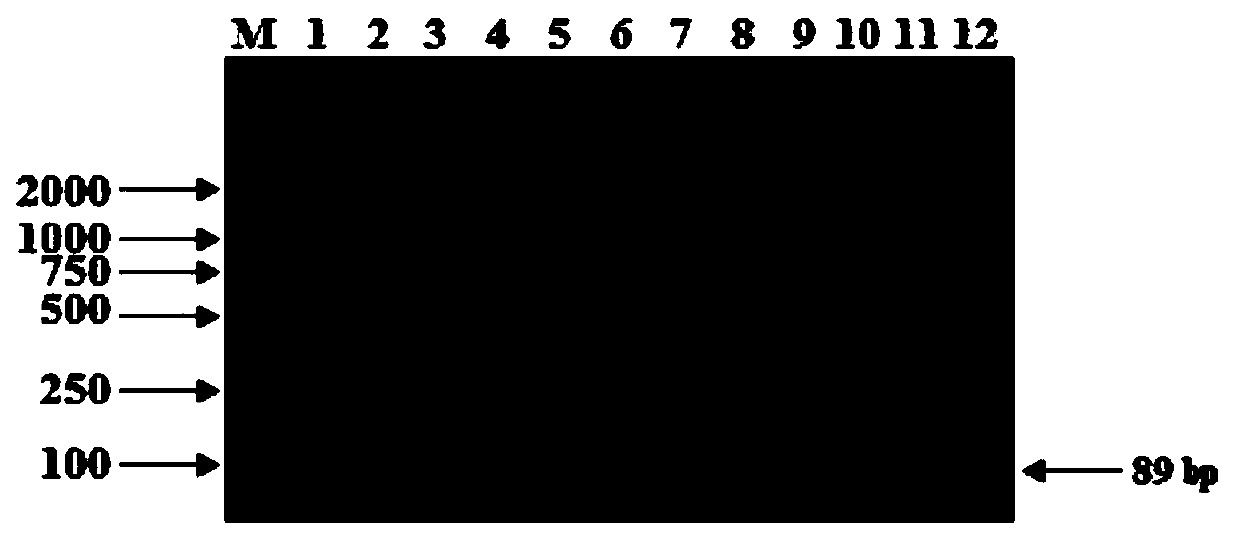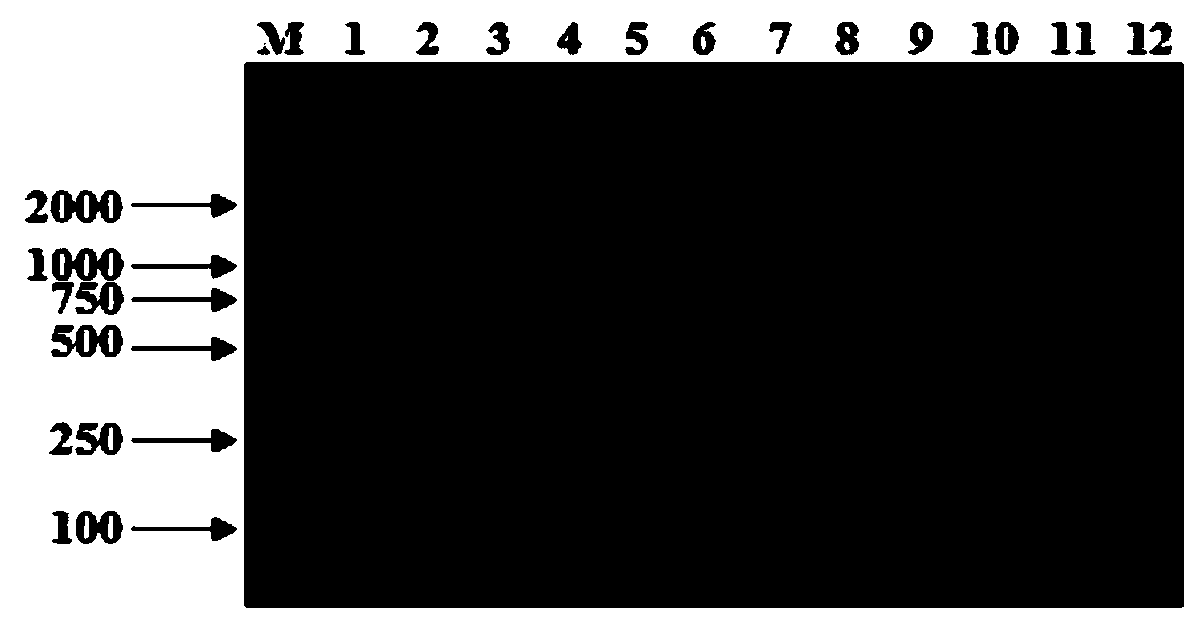Probe primer combination for detecting high-oleic acid transgenic soybeans, kit and method thereof
A technology of genetically modified soybeans and primer combinations, which is applied in the field of genetic engineering and can solve problems such as detection
- Summary
- Abstract
- Description
- Claims
- Application Information
AI Technical Summary
Problems solved by technology
Method used
Image
Examples
Embodiment 1
[0046] Example 1. MLPA Ligation-Dependent Probe and Universal Primer Design for Transgenic Soybean
[0047] Use primer design software such as Primer Premier to design junction-dependent probes for the exogenous gene (nucleotide sequence shown in SEQ ID NO: 1) and the junction region of the soybean genome for the left border flanking sequence of E2D8037-3 (for the design principle, see figure 1 ). The hybridization sequence in the ligation-dependent probe can be designed in one of the following three ways:
[0048] 1. The hybridization sequences of the upstream and downstream connection-dependent probes are exactly located on both sides of the insertion site, that is, the hybridization sequences of the upstream connection-dependent probes are designed based on exogenous gene sequences, and the hybridization sequences of the downstream connection-dependent probes are designed based on the soybean genome;
[0049] 2. The hybridization sequence of the upstream connection-depende...
Embodiment 2
[0058] Example 2. Transgenic soybean event E2D8037-3 specific MLPA PCR detection method
[0059] Using the CTAB method to extract the genome of transgenic soybean E2D8037-3 seeds, first crush the seed material into powder with a grinder; weigh 60±10 mg powder and add it to a 1.5 mL centrifuge tube; add 1200 μL (preheated at 65°C) CTAB lysis buffer , and incubated in a water bath at 65°C for 40 min, during which time the mixture was mixed by inverting 5 times. Centrifuge at 12000g for 10min at room temperature, transfer the supernatant to another new centrifuge tube; add an equal volume of Tris saturated phenol / chloroform / isoamyl alcohol (V / V / V=25 / 24 / 1) to extract two Once, extract once with chloroform / isoamyl alcohol (V / V=24 / 1), centrifuge at 12000g for 10min; carefully absorb the supernatant, add 2 / 3 volume of isopropanol, and mix carefully; precipitate at -20°C for 30min Centrifuge at 12000g for 10min, discard the supernatant, and suck up the liquid as much as possible; add...
Embodiment 3
[0066] Example 3 Transgenic soybean event E2D8037-3 specific MLPA detection sensitivity
[0067] Five samples with different concentrations of E2D8037-3 genome (5ng / μL, 0.5ng / μL, 0.05ng / μL, 0.05ng / μL, 0.005ng / μL) were prepared and amplified using these samples as templates. MLPA products were detected by 2% agarose gel electrophoresis, and the electrophoresis bands were observed under ultraviolet light. The detection sensitivity of this method can be as low as 0.5ng.
PUM
 Login to View More
Login to View More Abstract
Description
Claims
Application Information
 Login to View More
Login to View More - R&D
- Intellectual Property
- Life Sciences
- Materials
- Tech Scout
- Unparalleled Data Quality
- Higher Quality Content
- 60% Fewer Hallucinations
Browse by: Latest US Patents, China's latest patents, Technical Efficacy Thesaurus, Application Domain, Technology Topic, Popular Technical Reports.
© 2025 PatSnap. All rights reserved.Legal|Privacy policy|Modern Slavery Act Transparency Statement|Sitemap|About US| Contact US: help@patsnap.com



